

TEXAS
April 2017

5 of 6


TEXAS
April 2017


5 of 6
It’s a gatory day.
In fact, not a single snake until dark, just unfed scavengers, birds of prey, and feral BBQ.
Drive, drive, drive, drive. First, because it’s a long way between destinations. Second, there’s a lot of road to
cruise when we get to where we’re going. Finally, and I can say this with a high degree of confidence, we’re idiots.
OK, maybe not Darin, but speaking for myself, how else to describe someone strapped to a mobile seat for endless
hours, for the sole purpose of seeing something that might not even be there? Oh, right. There is another name: h . . .
And yet, when a special snake is finally found, all that riding becomes worth it. Which also makes it more
painful when you find it seconds too late. Back in the Big Thicket, Darin was eager to see a Tan Racer (Coluber
constrictor etheridgei), a SE Texas/SW Louisiana endemic. A car pulls out in front of us, and moments later we come
upon a gravid female, dragging herself in the dirt road, fatally wounded. That was the first of multiple snakes hit
practically in front of us.
On this day, the main reason we drive so far is to be in range of a species I’ve seen before, but only in Costa Rica.
Although common throughout Central and South America, Cat-eyed Snakes are rare in the U.S., found only in this
corner of southeastern Texas, the extreme northern end of their range. And from photos I’d seen, the local version
looks more colorful than those I’ve previously found. Tonight in particular, it’s our top target.
So, we’re cruising back and forth on a stretch of blacktop, when there it is. We give a shout,“Cat-eyed!”
―
don’t
even think about yelling “septentrionalis” ―
and bolt from the car. The snake looks unharmed, but lies very still, so at
first we’re not sure if it’s alive or dead. We pick it up and it starts moving around. There are no visible wounds, so I
bag it for daylight photos. A little while later I check it out, but now the snake is slowly twisting its head, and soon it
goes limp and expires. I end up taking voucher shots, wishing the snake wasn’t so completely cooperative.
We have better luck on foot by a creek. Beside the water, a Gulf Coast Ribbon Snake is resting in tall grass.
Swinging my headlamp around, I spot a snake stretched out in a whispy tree. Can’t tell what kind, but it’s pretty
big, and most certainly a new species for the trip.
Darin and I discuss the possibilities, but none of them seem right, and we can’t get close enough for a positive ID.
The tree is on a steep bank, and the snake is resting on branches that extend way over the deep water, so there’s no
way to approach from where it can be seen. On the dry side, the tree is surrounded by thick bushes, so there’s no way
to approach from where the snake won’t be spooked. And even if that barrier could be breached, the tree is too flimsy
to climb, so there’s no way to reach the snake for a catch, or even a close-up look before it drops into the water.
Sounds like a job for Darin.
He puts on his gloves, goes to the dry side, and begins to pry his way through the bushes and tangled
vegetation. I keep a light on the snake, giving Darin directions as he blindly works his way closer to the tree. At any
moment I expect the snake to take off, but it stays still and undisturbed, apparently asleep. Darin, on the other hand is
getting very disturbed, being attacked by ants and thorns.
Somehow Darin manages to get through and is able to pull himself a few feet up the tree trunk. He’s out of
sight, but we triangulate on branches we can both see, and I steer his headlamp towards the mystery snake. Now
Darin can see it for himself. It’s nearly four feet long, striped, and to our genuine amazement,
It’s a Ribbon Snake!
I can’t believe it. No way they get so big, even in Texas. But here’s proof that all those posters may be right.
Darin starts to shake the branch, and instead of dropping towards the water, the Ribbon moves forward in
Darin’s direction. Disturbed by all the shaking, a second snake reveals itself, heading up on a different branch. And
then a third, so now we have three Ribbons all crawling towards Darin. One by one he gathers them in, climbs down,
and the kid emerges triumphantly from the bushes, trophies in hand. (For a group shot, we also include the first one.)
Our monster Ribbon Snake (left) measures 44”, and that’s with a stub tail. A little later we come across a second
giant (right), this time on the crawl, blithely ignoring us puny humans.
Many, many more miles that night, but no notable finds, except a surprising DOR. We see a pile of something on
the side of the road. Unsure of what it is, we make a stop. It proves to be the remains of a massive Rattlesnake, almost
entirely intact, except for its badly crushed head.
Darin goes to hook it off the pavement, but as soon as he touches the lifeless body, the dead snake catapults. A
mutilated head lashes out, pulling the body forward in a huge lunge. The rattle is buzzing, wild strikes are thrashing
the air, and though the mouth is a mangled mess, a tongue still flicks through a ragged hole. It’s horrible and
fascinating at the same time, perhaps the last flicker of life transitioning to postmortem reflexes. It’s also another sad
and frustrating occurrence of our arriving just a little too late.
We drive south as far as we can go, to the subtropical Lower Rio Grande. Exhaustion begins to set in. After a
few hours sleep, we get a delayed start the next morning, hitting the field later than planned. I worry that it’s already
too hot to find today’s target, the highest priority of our trip, and we’ll have to settle for lizards and birds.
Irritation also begins to set in, specifically, with Darin. Well, to be more precise, on Darin. Remember the
tangled vegetation he braved to reach the Ribbon Snakes? Turns out you can’t see poison ivy in the dark, but you sure
can feel it the next day. His wrists are red, the itchy rash a constant distraction. Although Darin’s experienced poison
oak back in California, this is his first encounter with poison ivy, a dubious lifer. But nothing a real lifer wouldn’t cure.
We’re walking in shade, searching for something majestic, but thinking we may have missed the window of
opportunity. If only we hadn’t been out so late, if only we had gotten up early, if only our timing was better . . .
Suddenly Darin sees it, and there before us is the highlight of our trip:
When a special snake is finally found, all that riding becomes worth it. Doubly so when you find two.
As we’re walking past a small bayou, Darin glances through an opening in the surrounding bushes, and his eye
catches a six-foot snake swimming across the water in our direction. Apparently the Indigo eyes Darin at the same
instant, because it stops and stares at us, tongue-flicking while floating motionlessly.
The snake spends a moment making up its mind, then changes course and cruises off parallel to the shore. We
follow along for a few minutes, hoping the Indigo will turn again and emerge on our side. But our view is obstructed,
and eventually we lose sight of the snake.
How lucky we were out so late, didn’t get up early, and had perfect timing, otherwise we might have missed our
two Indigo appointments. Feeling ready to ride, we hit the road again, hoping other prime targets have scheduled
their day to coincide with ours.
Texas Indigo Snake
Drymarchon melanurus erebennus


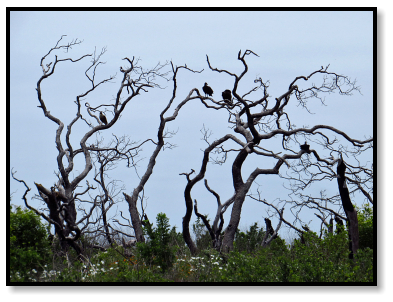
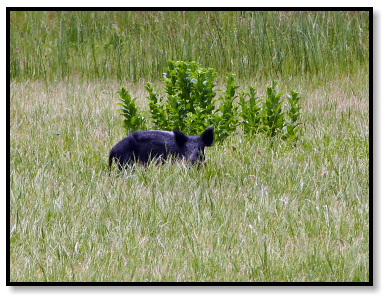
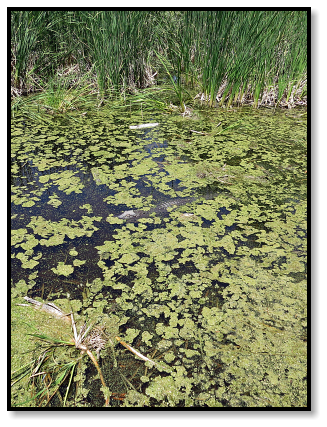
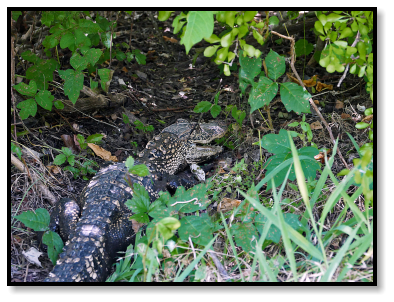
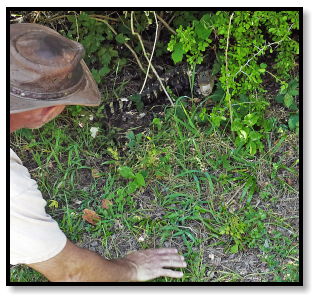
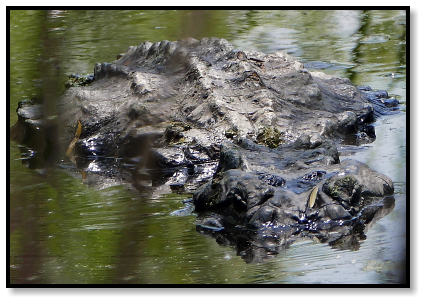
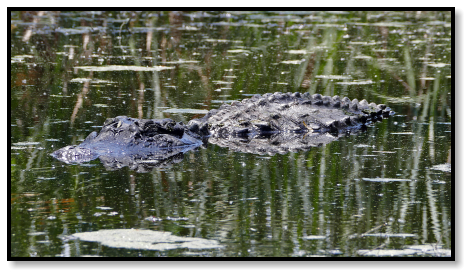

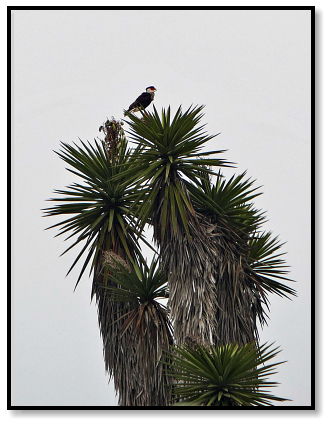
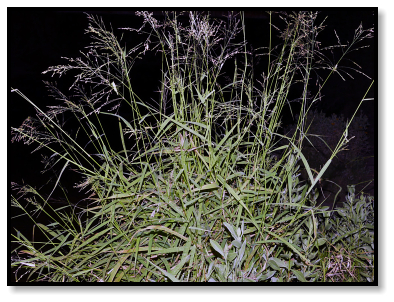
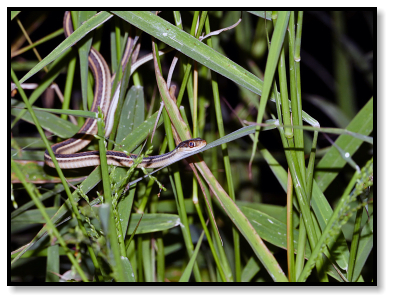
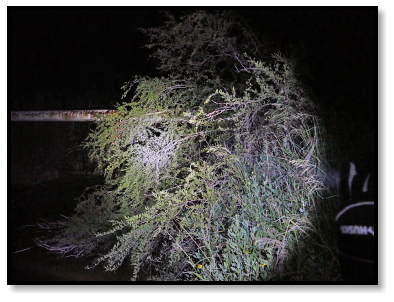
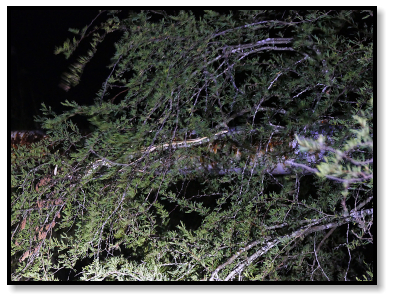
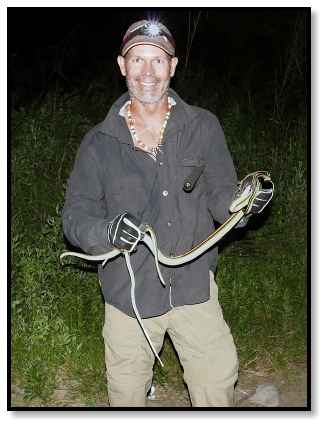
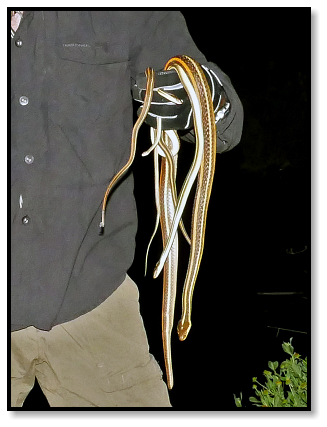
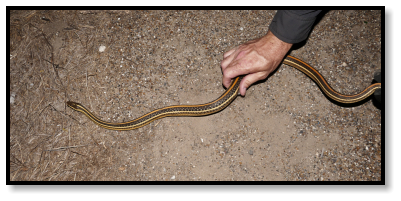
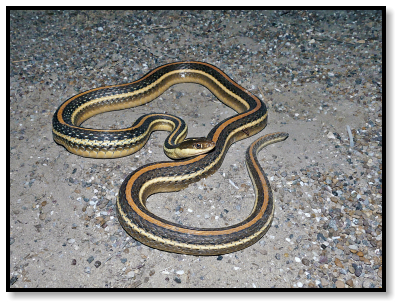
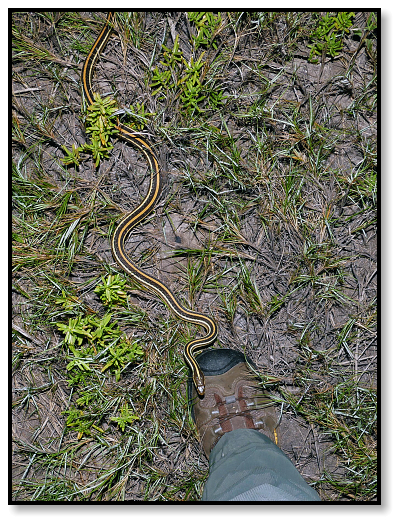
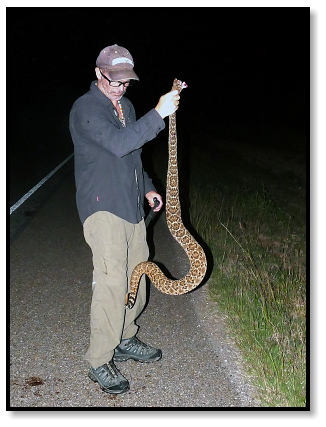
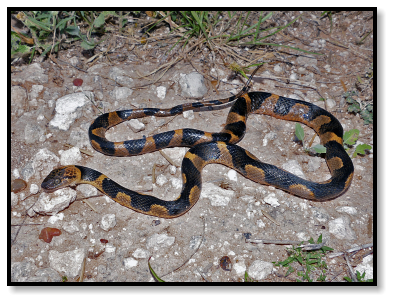
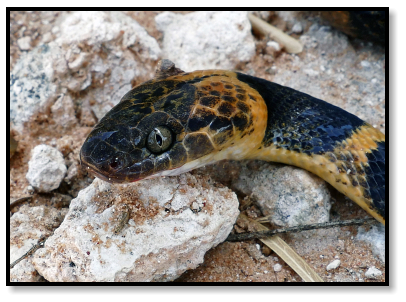
Northern Cat-eyed Snake
Leptodeira septentrionalis
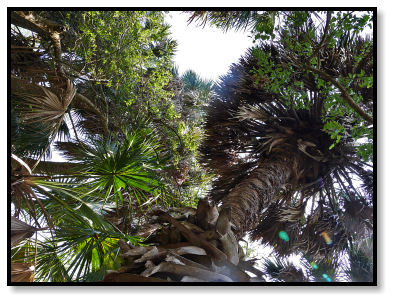
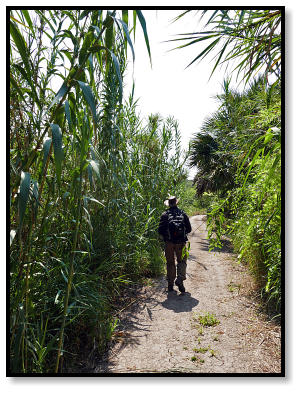
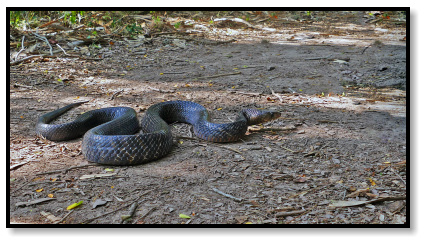
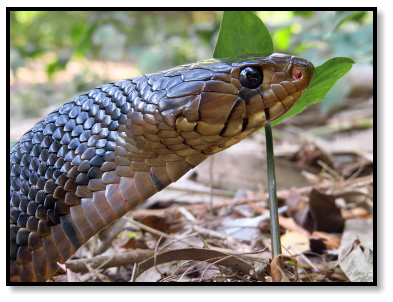
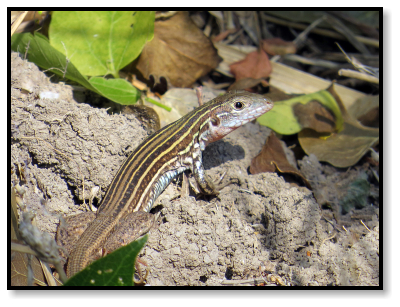
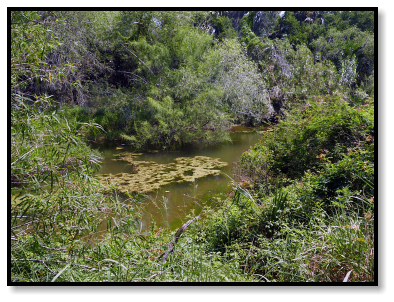
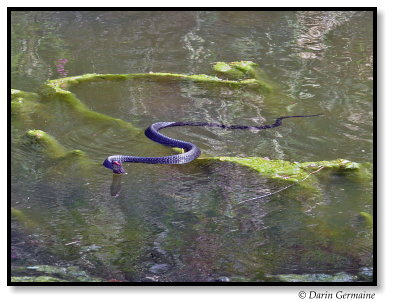
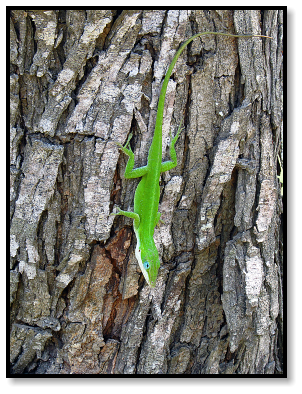
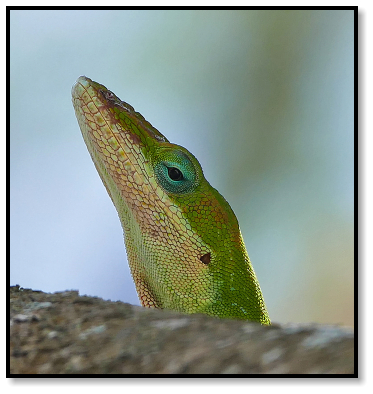
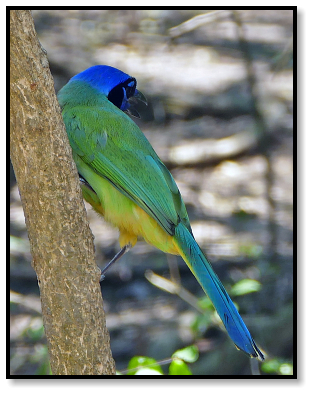
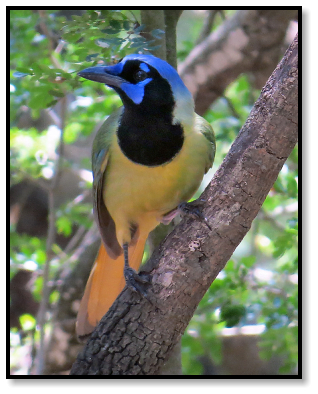
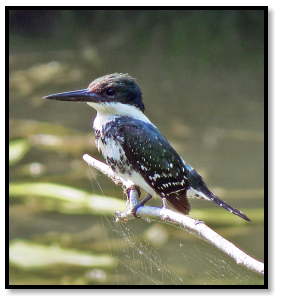

© Darin Germaine
© Darin Germaine

Green Anole
Anolis carolinensis
Texas Yellow-headed Racerunner
Aspidoscelis sexlineata stephensae
Green Kingfisher
Green Jay








